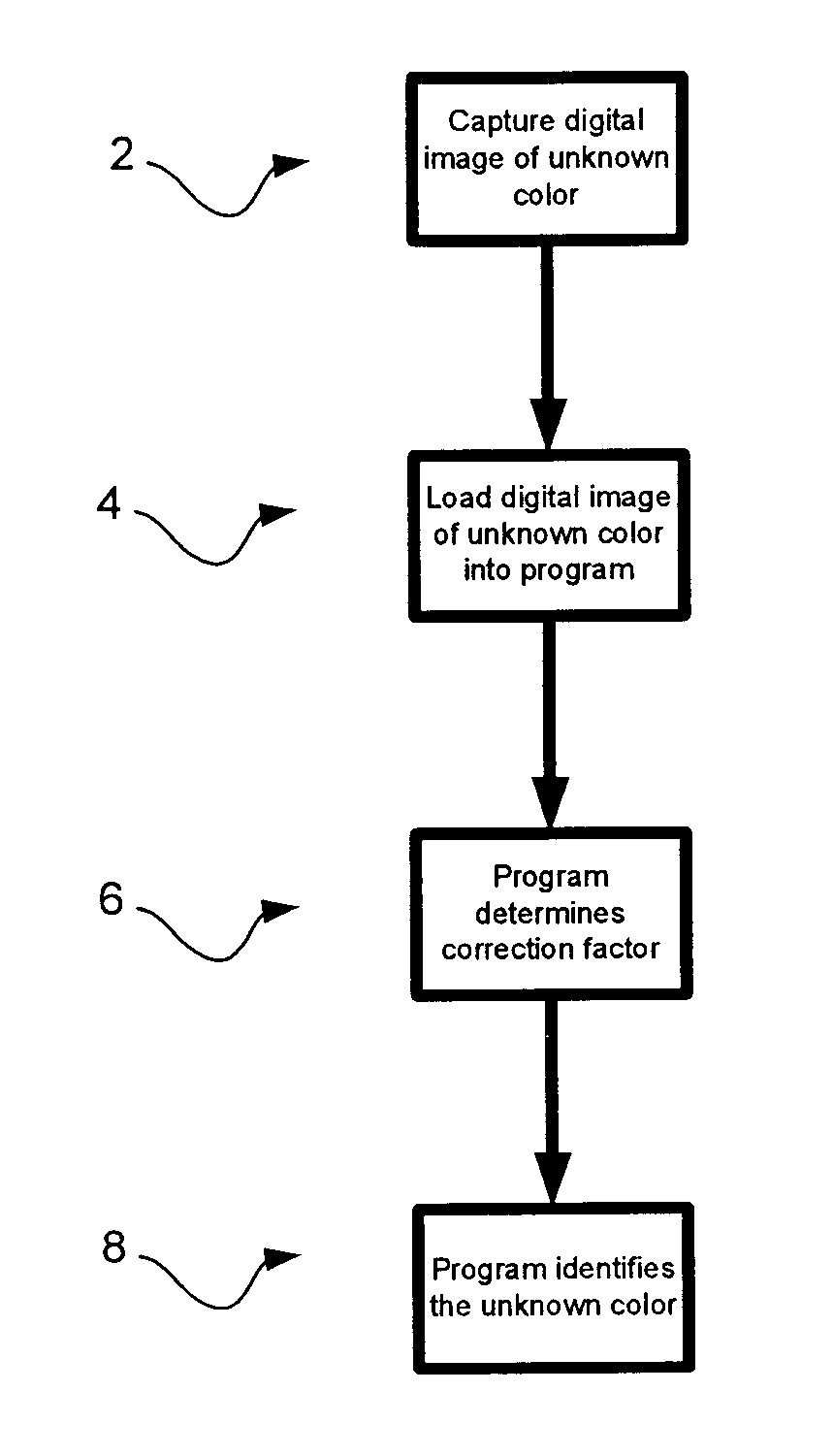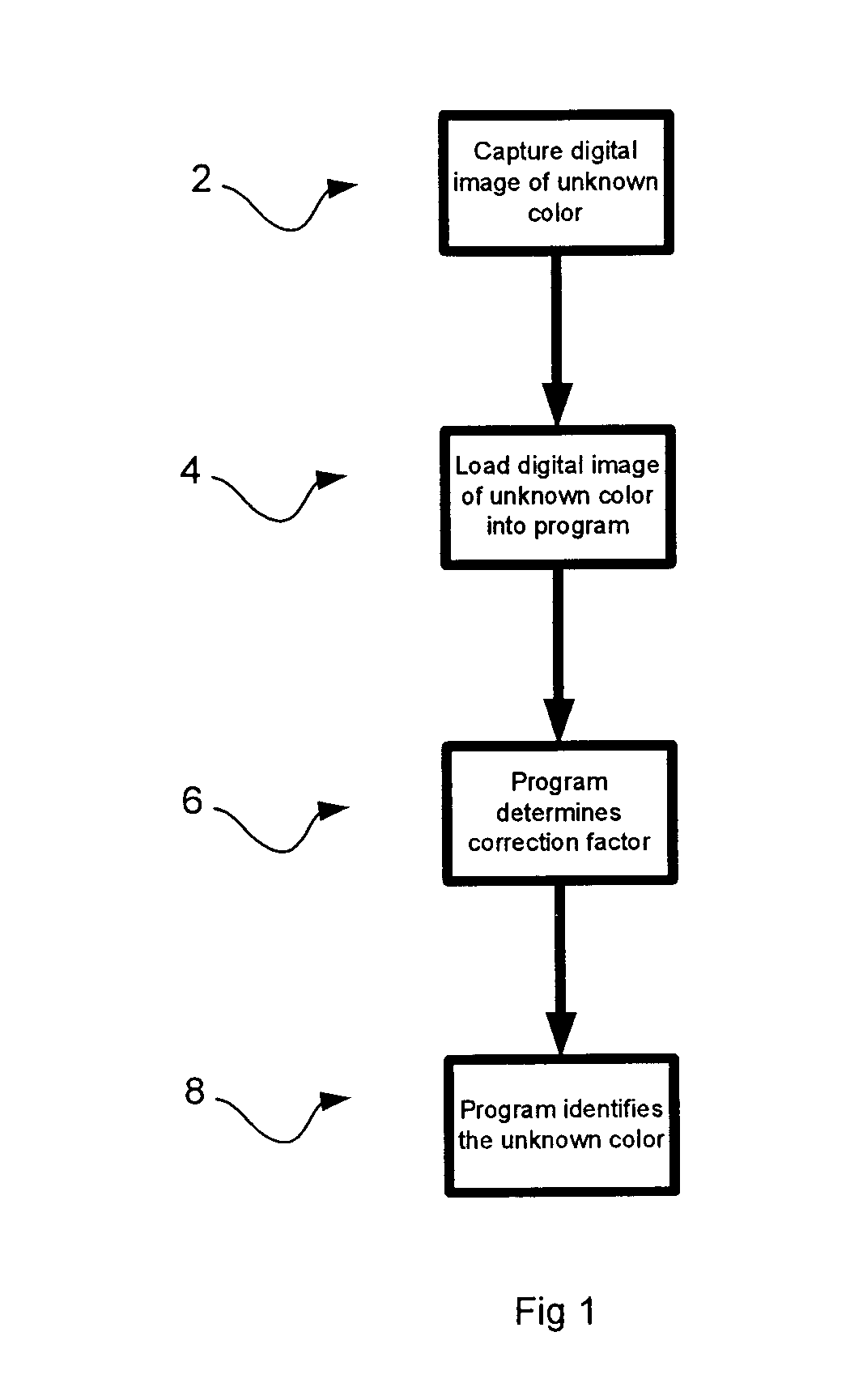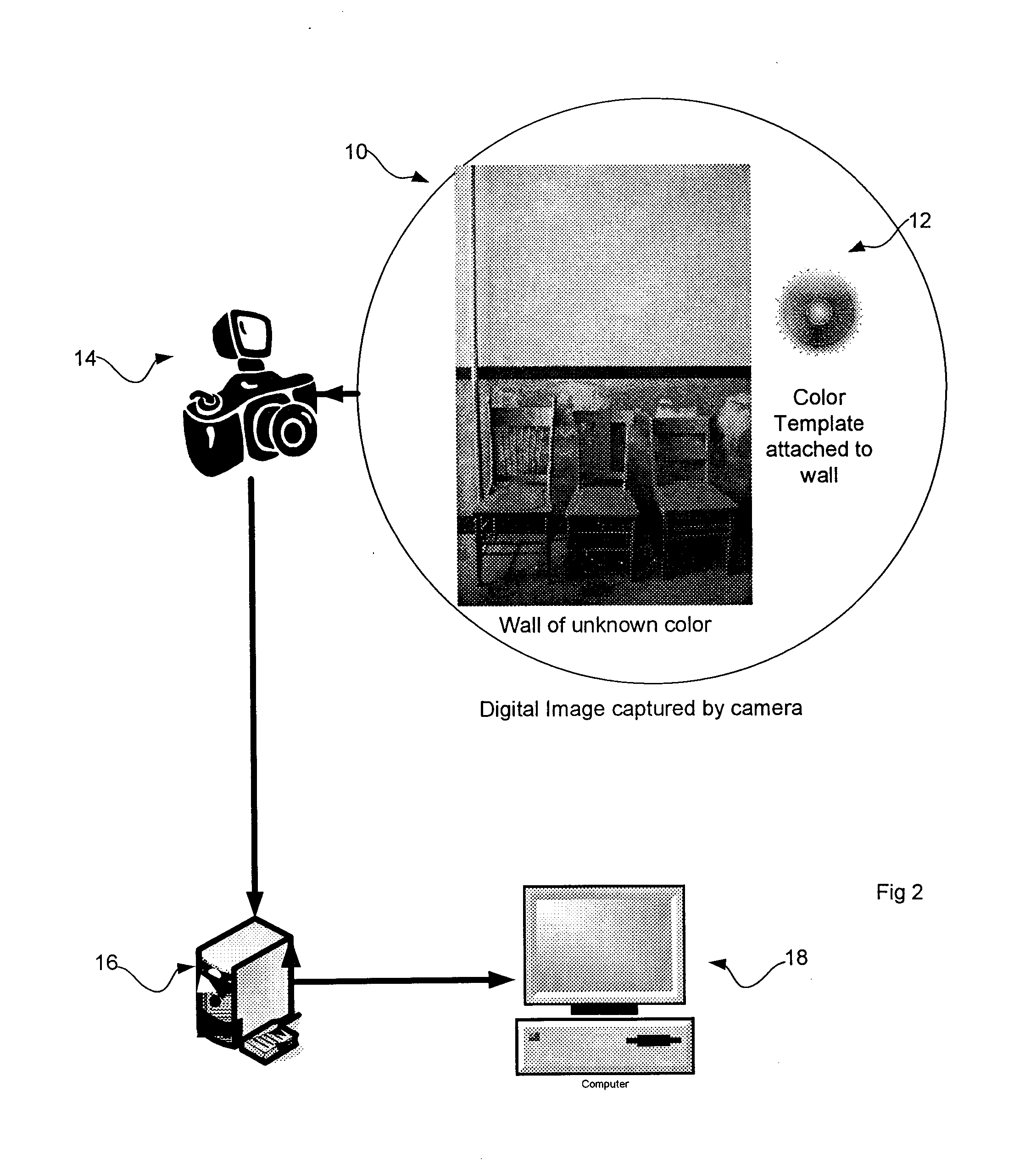Method for electronic color matching
a technology of electronic color matching and color swatch, applied in the field of electronic color matching, can solve the problems of inability to separate color from intensity, difficulty in finding a suitable color swatch to be analyzed by the spectrophotometer, and inability to detect color
- Summary
- Abstract
- Description
- Claims
- Application Information
AI Technical Summary
Benefits of technology
Problems solved by technology
Method used
Image
Examples
Embodiment Construction
[0003] A target color is typically reproduced by determining a set of pigments and loadings that yield the target color under all lighting conditions. Existing color matching practices use a color measuring system to match the color of a submitted standard (i.e., a color swatch to be matched). A typical conventional system is the MTS Color Match Software provided by MTS Colorimetrie Inc. This color measuring system consists of a spectrophotometer attached to a personal computer with software to control the system. The color matching process consists of reading the color of the swatch (using the spectrophotometer) and storing it in the computer. The individual color matcher then decides how many colorants should be used in the color formula and which colorants the computer can use when calculating the match. The computer will then attempt every combination of the selected colorants and present to the user the colorants and loadings that best match the target color. Using the computer...
PUM
 Login to View More
Login to View More Abstract
Description
Claims
Application Information
 Login to View More
Login to View More - R&D
- Intellectual Property
- Life Sciences
- Materials
- Tech Scout
- Unparalleled Data Quality
- Higher Quality Content
- 60% Fewer Hallucinations
Browse by: Latest US Patents, China's latest patents, Technical Efficacy Thesaurus, Application Domain, Technology Topic, Popular Technical Reports.
© 2025 PatSnap. All rights reserved.Legal|Privacy policy|Modern Slavery Act Transparency Statement|Sitemap|About US| Contact US: help@patsnap.com



